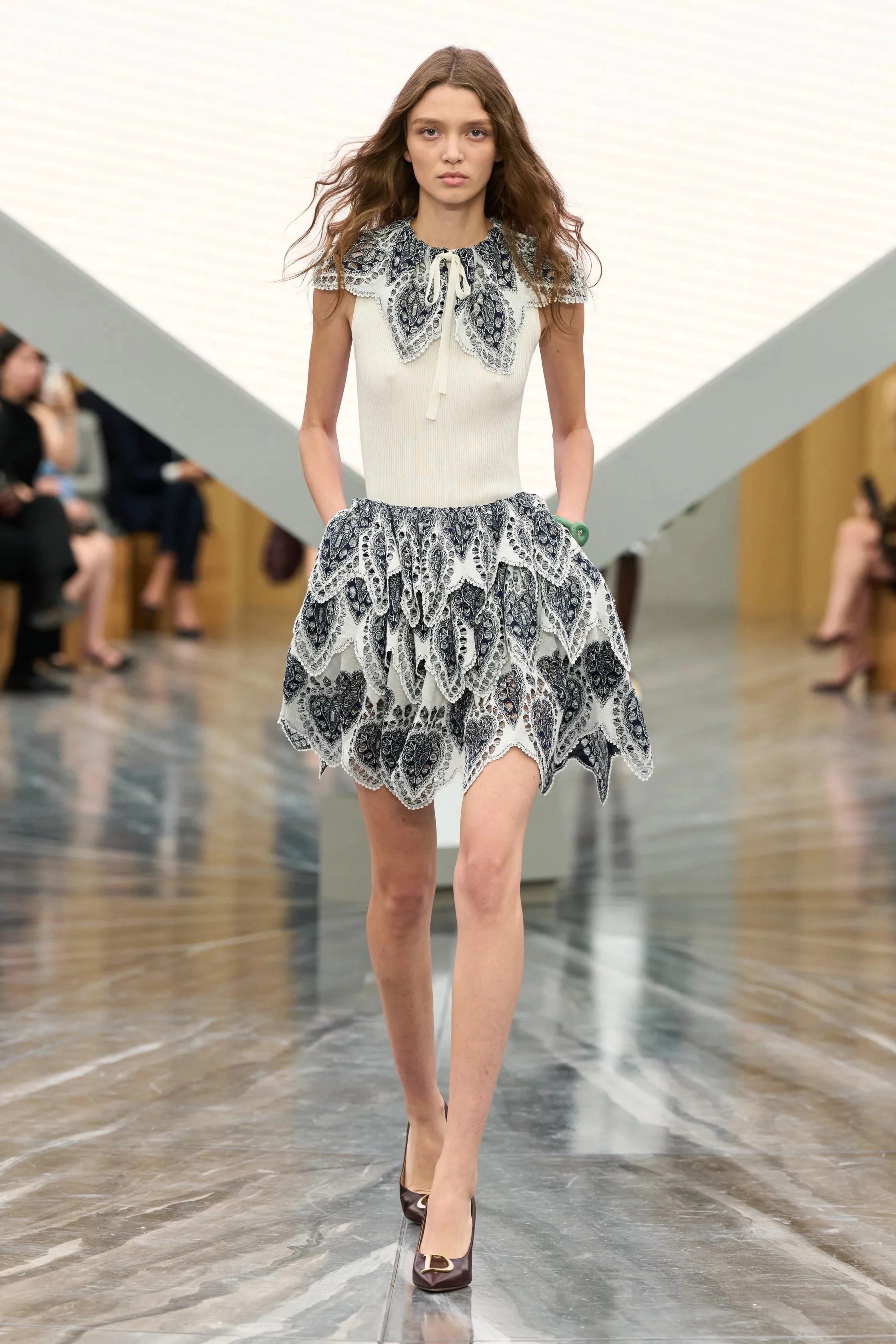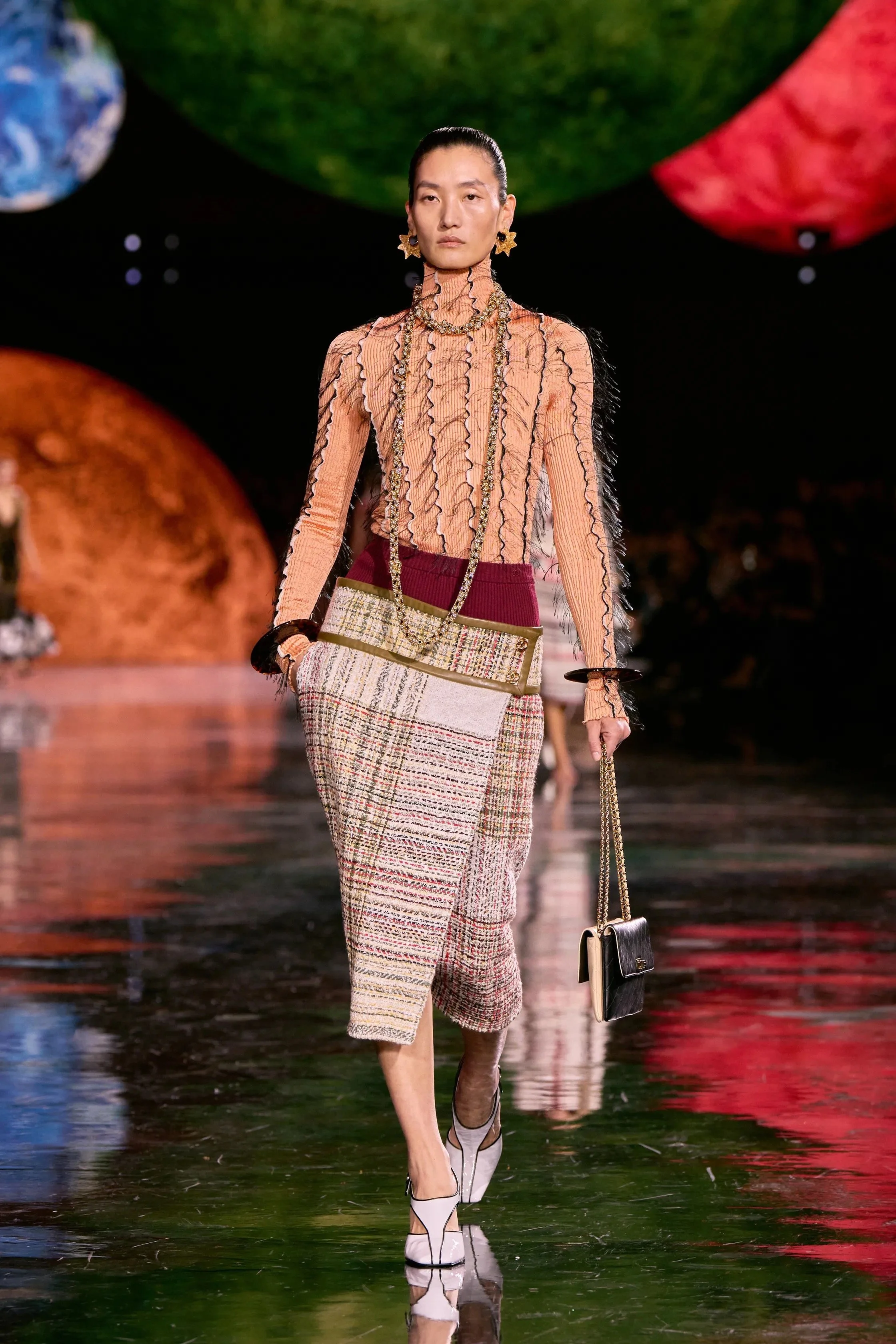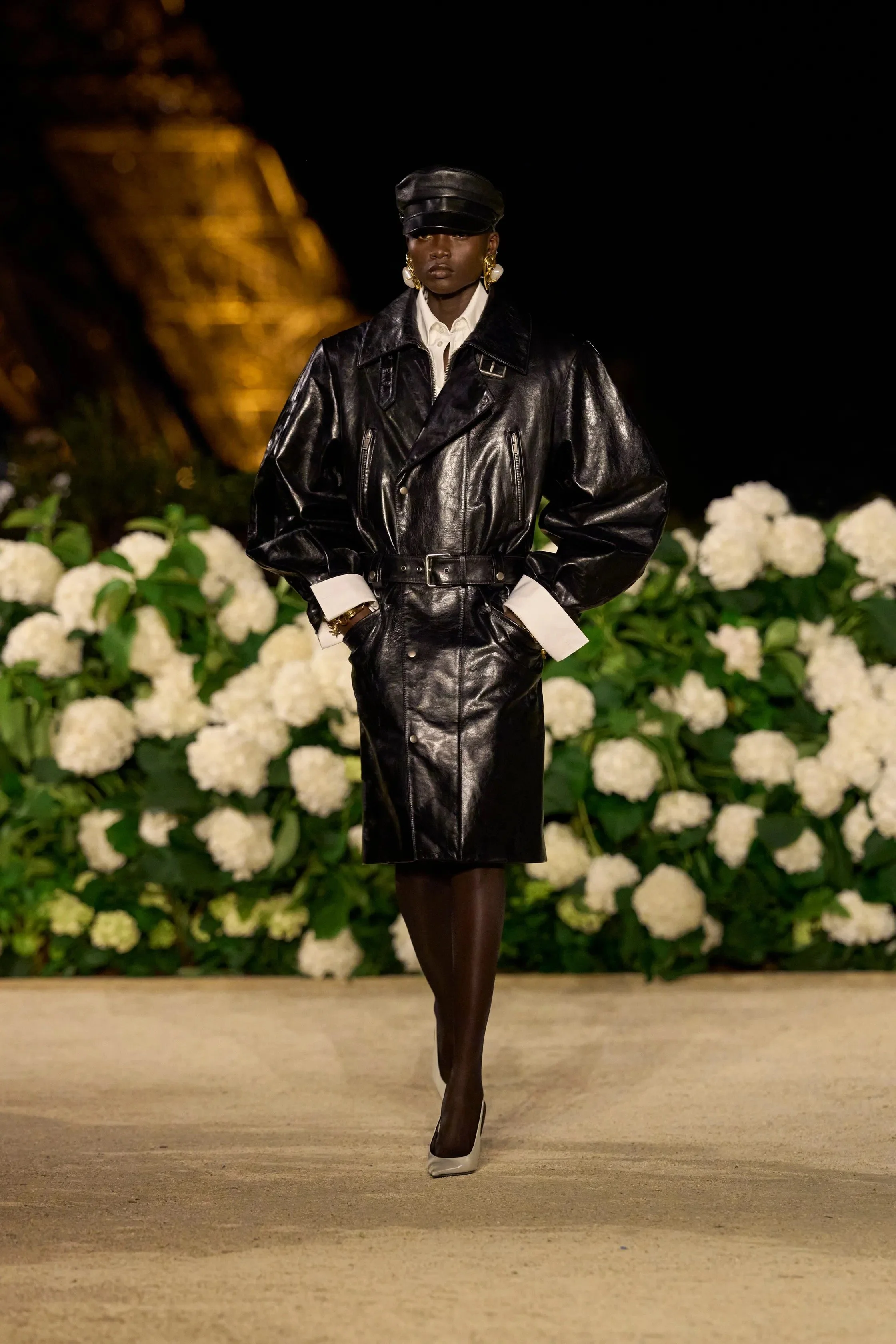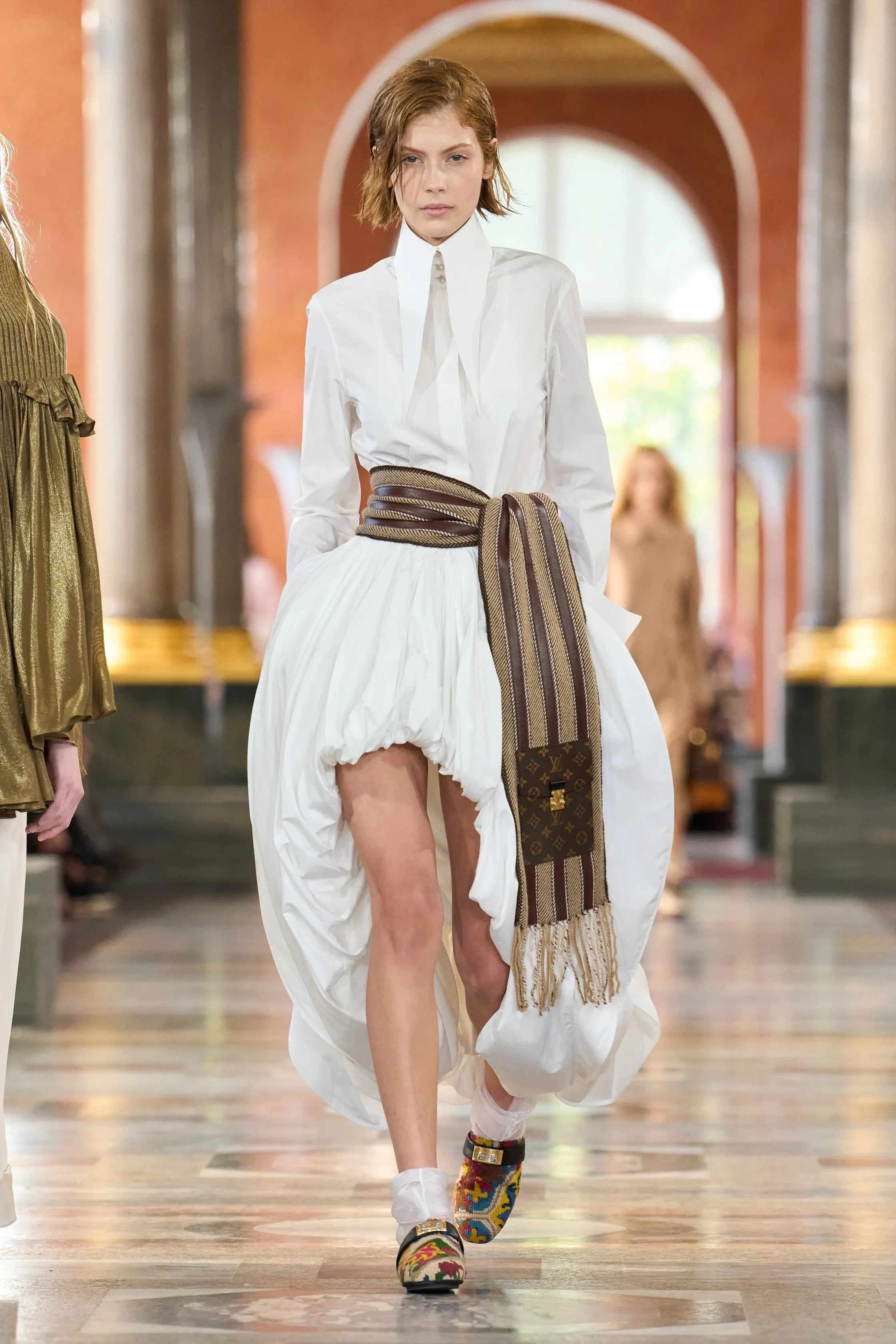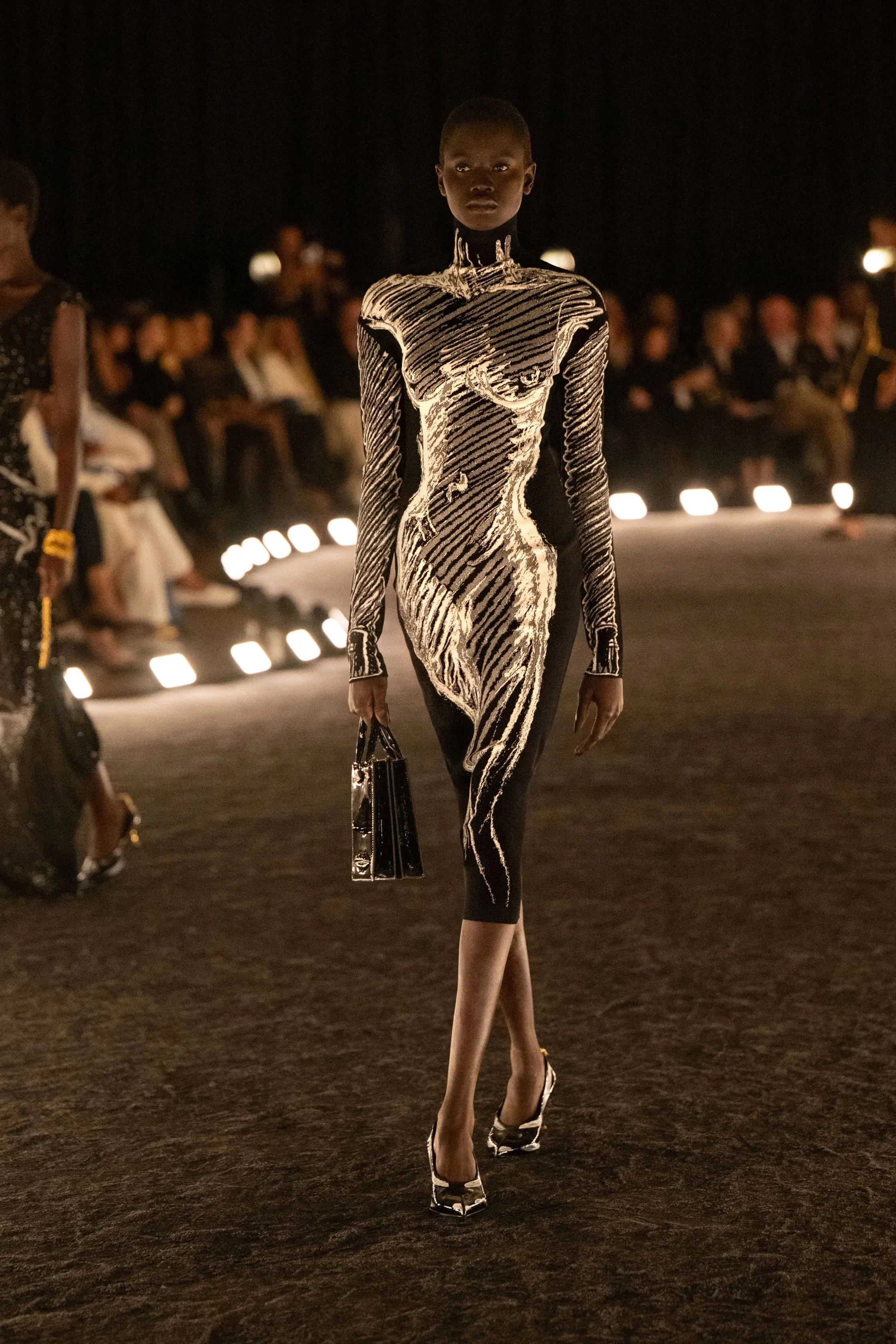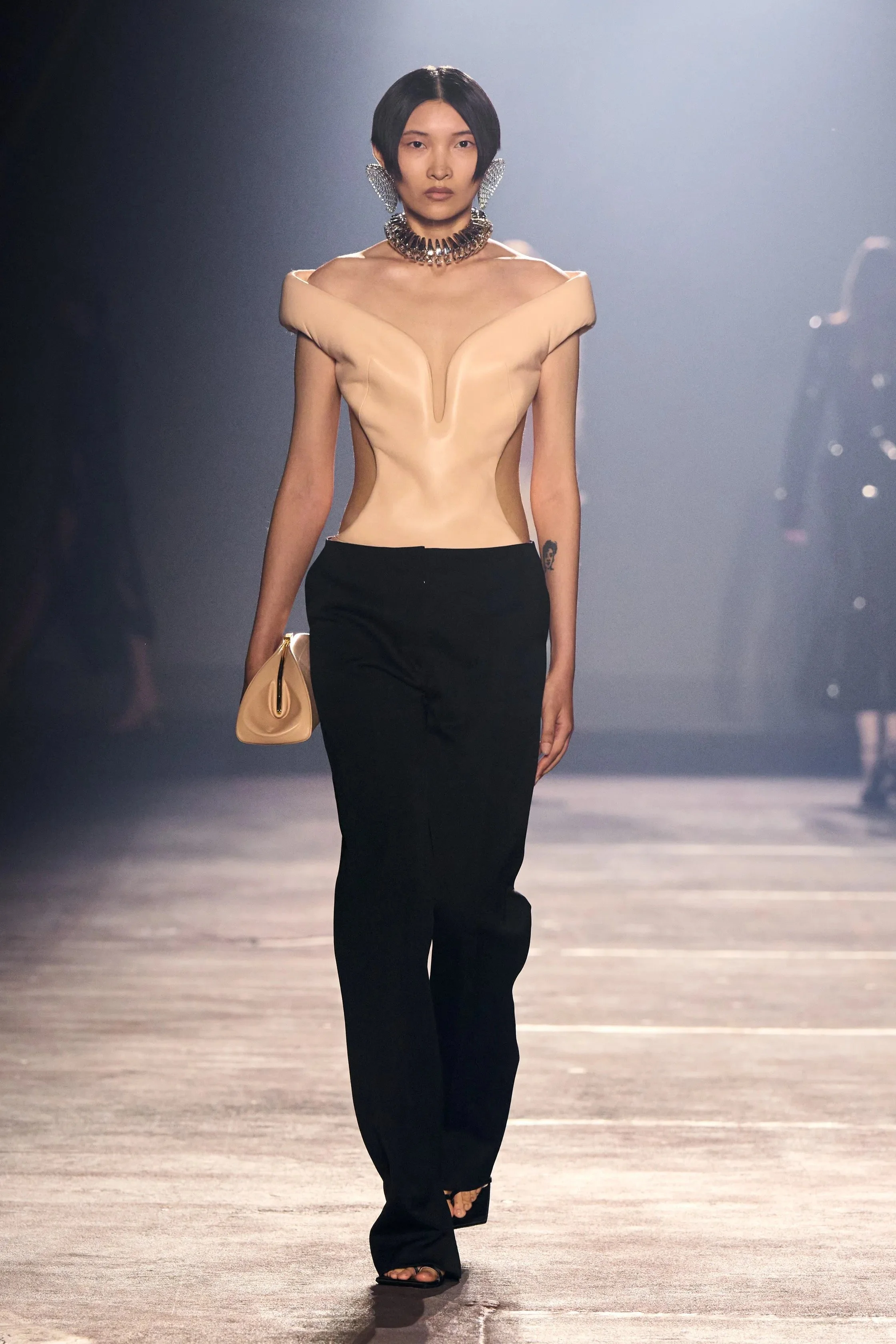Paris Fashion Week SS26: Highlight Shows
Paris in SS26 moved with its own kind of rhythm, soft and electric at once. The city turned into a stage where elegance felt effortless. Every show spilled out into the streets, blending old glamour with something sharper, more present. It was that rare kind of beauty that doesn’t try, it just happens and everyone feels it.
DIOR: Jonathan Anderson’s Study of Past and Power
Jonathan Anderson’s debut at Dior unfolded like a dialogue between centuries. He approached the house’s mythology as a living system, one to reimagine. His silhouettes collided eras: tweed bar jackets paired with flying-buttress cargo shorts, dresses warped by jersey and white denim meeting 18th-century frock coats. The tension between structure and spontaneity defined the show. It wasn’t nostalgia; it was deconstruction with tenderness. Anderson stripped Dior of its hauteur and dressed it with curiosity. The famous Bar jacket reappeared in green Donegal tweed, shrunken to near-childlike proportions, he said it's a playful wink at power and vulnerability. Accessories carried Dior’s image: huge sculptural bows that framed motion. Dior SS26 proved that the future lies in how fearlessly one handles the past.
CHANEL: Matthieu Blazy and the Craft of Reinvention
Matthieu Blazy’s first Chanel collection was a deep fashion inhale; respectful and materially alive. He entered the house, spending weeks inside its archives until he could speak its codes fluently. His response was tactile: cropped tweed jackets re-cut tailoring, boxy shirts lined with metal chains for weight and layers that redefined Chanel’s womenswear influence. It was a study in motion, where every fabric carried the trace of a hand. Blazy reimagined the cult cropped tweed jacket with the quiet innovation of viscose tweed, nearly weightless and incredible precise. Knit V-necks and embroidered wrap skirts closed the show. His Chanel felt intimate and iconic. It celebrated ease, not ego. Blazy’s debut was the kind of reset only a true materialist could deliver, one stitch at a time.
YVES SAINT LAURENT: Vaccarello’s Parisian Nocturne
Anthony Vaccarello’s Saint Laurent SS26 unfolded beneath the Paris night sky, where the Eiffel Tower shimmered and a sea of white hydrangeas secretly spelled out YSL. The scene felt mythical, as if the city itself had dressed for the occasion. Spectators watched the arrivals of Hailey Bieber, Zoë Kravitz and Madonna before the real revelation began. Bella Hadid made her runway return, walking with the cool precision that defined the house’s late seventies glamour. Vaccarello understands Paris at night better than anyone. His women moved through the gravel in glossy slingback stilettos and razor sharp pencil skirts, the sound of power echoing through the gardens. The collection revisited the vocabulary of Helmut Newton’s photographs, where control and desire coexist in every gesture. Black leather jackets and white bow blouses exaggerated to the edge of rebellion. Speaking to women who command the gaze rather than seek it. Saint Laurent SS26 was a study in confidence, light and the dangerous beauty of restraint.
LOUIS VUITTON: Nicolas Ghesquière’s Domestic Dreamscape
Nicolas Ghesquière transformed the Louvre into an imagined apartment for Anne d’Autriche; part royal fantasy, part modern sanctuary. The set blurred the boundary between intimacy and spectacle. Ghesquière’s Vuitton has always been about world-building, but this season he turned inward. “Dress for yourself first,” the collection seemed to whisper. Silk slips printed with painted wallpaper, berry-pink dresses edged in shearling and wooden-bead bodies like architecture. There was history in every look, but never costume. The color story rose, cream and powder felt like late-afternoon sunlight on marble. Ghesquière’s tailoring balanced ease with precision, creating silhouettes that moved with the body. Vuitton SS26 was a love letter to living beautifully, even when no one is watching.
SCHIAPARELLI: Daniel Roseberry’s Surreal Realism
Daniel Roseberry impressed the Pompidou season with a ready-to-wear collection that refused to behave like one. Schiaparelli SS26 blurred couture precision with wearability, proving surrealism can live in motion. The set was dark, metallic and cinematic to spotlight the new Schiaparelli woman: eccentric, confident, intelligent. Tailored suits featured padding displaced to hips and shoulders; knits erupted in sculptural ruffles; dresses revealed anatomy like a sketch. Roseberry’s fascination with curves became structural with bias-cut silks. The collection moved beyond spectacle toward intimacy and imagination. There was a quiet audacity in every hemline. Roseberry no longer needs to prove his place because Schiaparelli’s ready-to-wear is now its own art form; surrealism redefined for the street.
MUGLER : Freitas’s Brutalist Seduction
Miguel Castro Freitas made his Mugler debut literally and emotionally. The show took place in a brutalist car park in Paris’s 11th. Freitas revived the house’s hourglass silhouette with a sculptor’s discipline: strict double-faced wool, powdered beige and gray, shoulders and hips in perfect tension. His tailoring was anatomical. Mugler’s signature eroticism returned stripped of shine; jeweled bodices rendered matte, feathers turned into architectural extensions of movement. Freitas’s restraint made the collection even more powerful; it was less about shock, more about control. Every look felt mid-transformation, half-human, half-avian, caught in metamorphosis. His debut didn’t scream for attention, it earned it because Mugler’s SS26 was pure desire.

